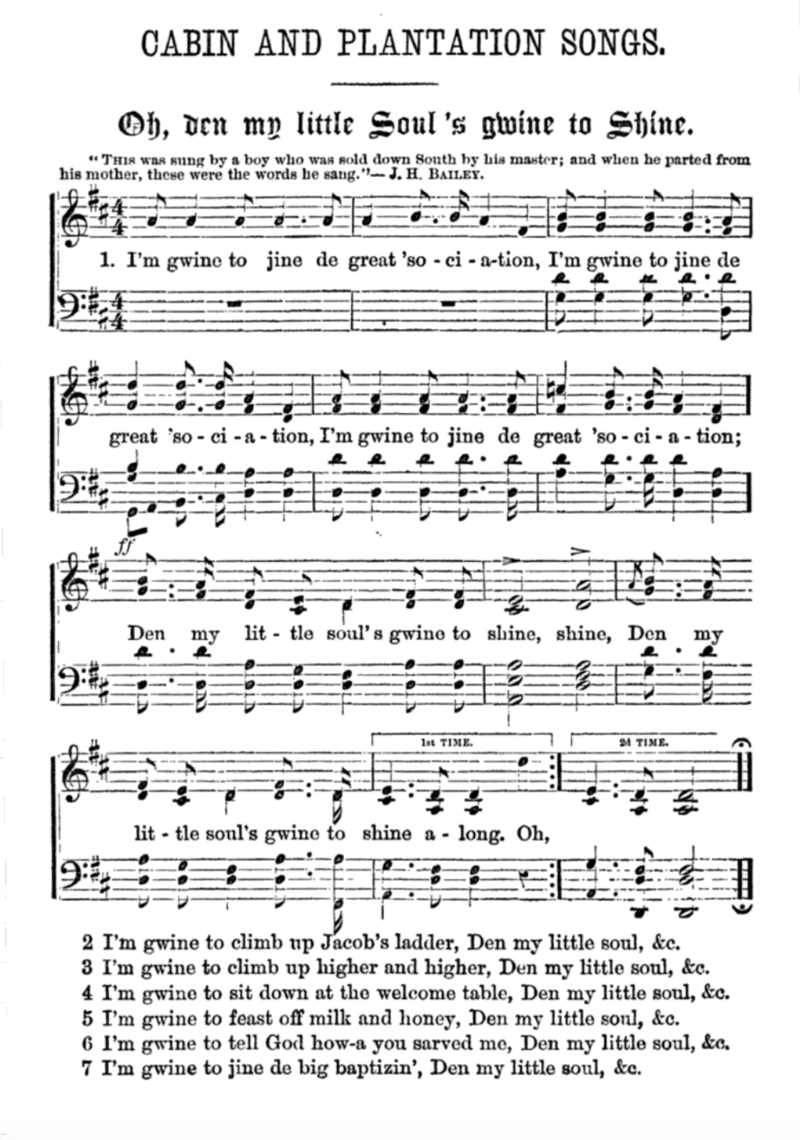
Introduction to Lesson 9 (Continued)
In the 1930s, jubilee singing became far more unrestrained and was no longer dependent on the formal musical training of the university groups. Additionally, quartets that had been developing parallel with jubilee choirs since the 1880s now dominated, with their harmonies, deep bass lines, chordal techniques, rhythmic complexity, and melodic ornamentation. In Jefferson County, Alabama, a robust local tradition evolved as showcased in the dramatic and varied recordings of the Birmingham Jubilee Singers. Although they retained the jubilee connotation on the more traditional spirituals-listen to "I'm Going to Sit At The Welcome Table "-they issued gospel and secular songs under the Birmingham Quartet name (Oliver 2012, n.p.).
Jubilee singing, therefore, was not a single musical practice, but, instead, was the meeting and overlapping of two or three African American song traditions: the arranged singing of the earliest Fisk Jubilee Singers, the trained voices of the university octets and sextets, and the harmonized but often free performances of the gospel/jazz quartets, all of which, under the "jubilee" banner, acknowledged their common roots in slave songs and spirituals.
With changes of emphasis-for example, in the smoothness of close harmony or the use of jazz rhythms-jubilee groups such as the Golden Gate Quartet (" Down by the River Side ") and the Selah Jubilee Singers (" Just A Closer Walk With Thee") continued to perform and record throughout the 1940s (Oliver 2012, n.p.). It is against this backdrop of musical changes that the blues American form of folk music related to jazz. It is based on a simple, repetitive, poetic-musical structure. emerged onto the American musical landscape.







